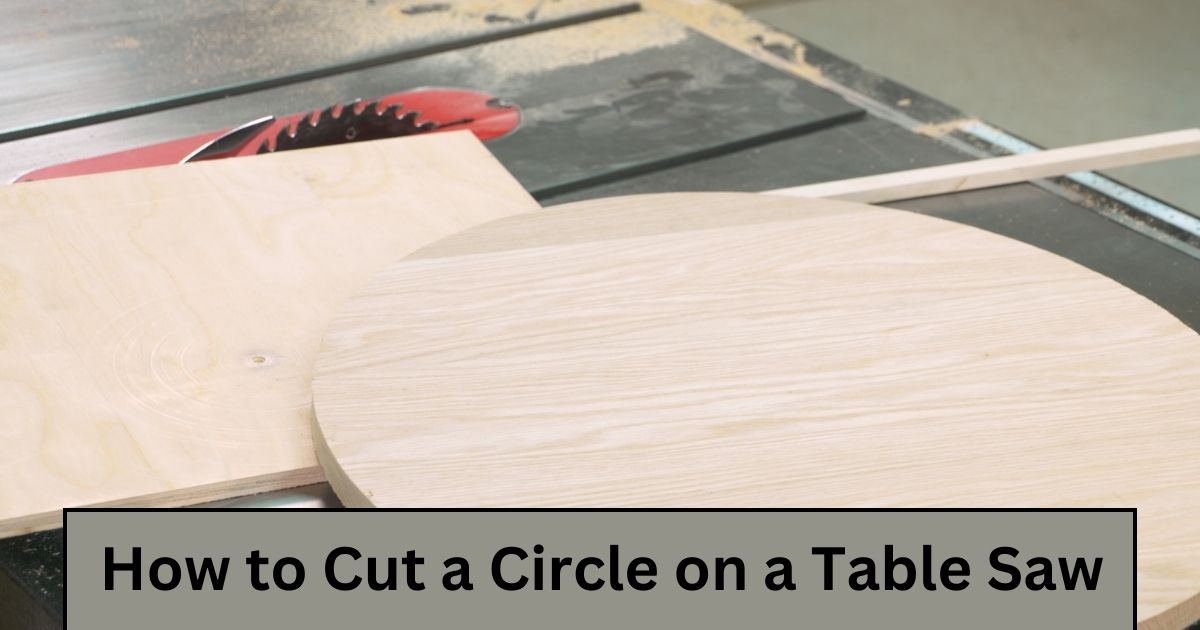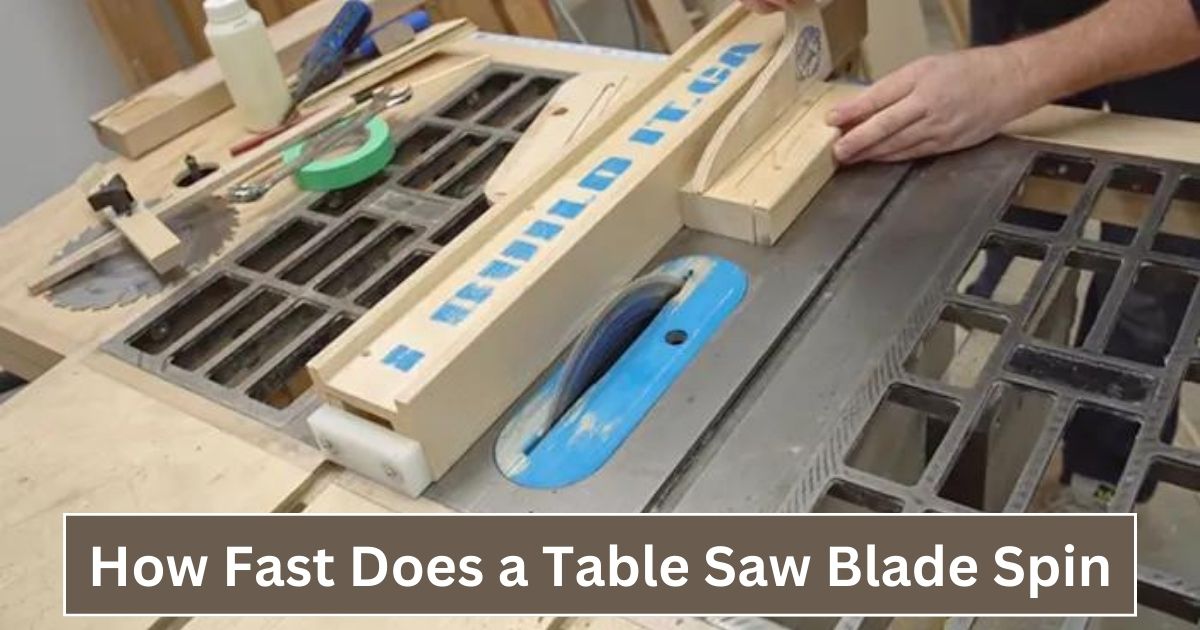Are you looking for a precise way to cut perfect circles on a table saw? Cutting circles on a table saw is a skill that every woodworker should master. The good news is that the process is easier than you think, and with a little bit of practice, you can achieve flawless results effortlessly.
In this section, we will cover the step-by-step process of How to Cut a Circle on a Table Saw. We will discuss the necessary tools and equipment, safety precautions, and techniques for achieving precise circle cuts.
Key Takeaways:
- Cutting circles on a table saw requires a proper setup and safety precautions.
- A circle cutting jig is a must-have tool for precise circle cuts.
- Table saw blades suitable for circle cutting and supporting tools are necessary.
- Marking the center of the circle and securing the workpiece is crucial.
- Practice is essential for fine-tuning your circle cutting skills.
Understanding the Basics of Circle Cutting
When it comes to cutting perfect circles on a table saw, it’s essential to have a good understanding of the basics. A proper table saw setup is crucial, as is the use of a circle cutting jig to ensure precise cuts. Here are some tips to keep in mind:
The Importance of a Proper Table Saw Setup
Before you begin cutting circles on a table saw, it’s crucial to ensure that your saw is set up correctly. This means aligning the blade, adjusting the fence, and ensuring that your saw is properly tuned. A poorly set up saw can result in inaccurate cuts, so this step is essential.
The Role of a Circle Cutting Jig
A circle cutting jig is a key tool for achieving precise circle cuts on a table saw. It allows you to set the radius of the circle and guides the saw blade through the cut, ensuring that the circle is cut accurately. There are many different types of circle cutting jigs available, ranging from simple homemade jigs to more complex commercial ones.
Tips for Achieving Flawless Circle Cuts
To ensure that your circle cuts are perfectly round and accurate, there are some key techniques to keep in mind. First of all, always use a sharp blade and avoid pushing the wood too quickly through the saw blade. You also need to make sure that the jig is securely attached to the saw and that the wood remains in place throughout the cut. Finally, it’s crucial to maintain good control over the wood at all times to avoid any accidents.
Tools and Materials Needed
When it comes to cutting circles on a table saw, having the right tools and materials is essential to achieve precise results. Below, we’ll explore the must-have items you’ll need to get started:
Table Saw Blades
The type of blade you use will affect the quality and accuracy of your circle cuts. Opt for a high-quality blade specifically designed for circle cutting. Blades with fewer teeth per inch are ideal for circle cuts as they produce a smoother finish.
Circle Cutting Jigs
Using a circle cutting jig simplifies the cutting process and ensures consistent results. There are many different types of jigs available, including commercial and homemade versions. Choose a jig that suits the size and thickness of your workpiece and provides excellent stability and accuracy.
Supporting Tools and Accessories
In addition to a quality blade and circle cutting jig, you might need some supporting tools and accessories. These include a miter gauge, a marking gauge or center finder to locate the center point of your circle, clamps to secure your workpiece, and a push stick to safely guide your material through the saw.
Safety Equipment
Cutting circles on a table saw can be dangerous without proper safety precautions. Be sure to wear safety goggles to protect your eyes from flying debris and use earplugs to protect your ears from the loud noise. Always use a push stick and keep your fingers away from the saw blade at all times.
With the right tools and materials in hand, you’re now ready to set up your table saw for circle cutting.
Setting Up Your Table Saw for Circle Cutting
Proper setup is key to achieving accurate circle cuts on a table saw. Here are the steps to prepare your table saw for circle cutting:
- Align the blade: Proper blade alignment is essential. Use a combination square or a specialized tool to ensure that the blade is parallel to the miter gauge slot.
- Adjust the fence: The fence should be adjusted to the correct distance from the blade, depending on the size of the circle you want to cut. Measure the distance from the blade to the fence, and adjust accordingly.
- Install a circle cutting jig: A circle cutting jig can help you achieve more accurate and consistent circle cuts. Purchase a pre-made jig or make your own using plywood or another suitable material. Ensure it has a pivot point and a secure mechanism to hold your workpiece in place.
Once you have properly set up your table saw for circle cutting, you should also consider additional safety measures such as using a push stick and wearing safety goggles.
Safety Precautions
When you’re cutting circles on a table saw, it’s important to prioritize safety. The following safety precautions can help prevent accidents and injuries:
- Always wear safety goggles to protect your eyes from flying debris.
- Use push sticks or other tools to keep your hands away from the blade and reduce the risk of injury.
- Keep the workpiece firmly in place with clamps or other devices.
- Never use a blade that’s dull or damaged.
- Avoid wearing loose clothing or jewelry that could get caught in the blade.
By following these safety precautions, you can reduce the risk of accidents and ensure a safe and successful circle cutting experience on your table saw.
Creating a Circle Cutting Jig
If you’re looking to achieve perfect circle cuts on a table saw, building a circle cutting jig is an excellent way to enhance your cutting precision. A circle cutting jig is a device that attaches to your table saw and helps guide the workpiece along a predetermined circular path, resulting in accurate and repeatable cuts.
Here’s a step-by-step guide on how to create a homemade circle cutting jig:
- Measure the diameter: To determine the size of the jig, measure the diameter of the circle you want to cut and add 1-2 inches to the total to ensure adequate clearance.
- Cut the base: Cut a square piece of plywood or MDF to the same size as your circle diameter, and attach a piece of straight wood to the bottom edge for stability.
- Create the pivot point: Mark a center point on the square base, and cut a small hole or saw kerf at the center to serve as the pivot point for the jig.
- Add a radius arm: Cut a length of straight wood or aluminum to the radius of your circle, and attach it at a right angle to the base, with one end at the center point and the other overhanging the edge of the base.
- Create the cutting guide: Cut a thin strip of wood or plastic to fit in the saw kerf and attach it to the top of the radius arm, perpendicular to the base. This acts as the fence that guides the workpiece along the circular path.
Once you’ve assembled your circle cutting jig, attach it to your table saw and start cutting perfect circles with ease.
Step-by-Step Circle Cutting Process

Now that you have set up your table saw and taken necessary safety precautions, it’s time to dive into the circle cutting process. Here is a step-by-step guide:
Step 1: Mark the Center of the Circle
Using a compass or any suitable measuring instrument, locate the center of your intended circle on the piece of work. Mark this point with a small x.
Step 2: Set the Blade Depth
Using the blade height adjustment mechanism, set the saw blade to the desired depth according to the thickness of the material you will cut.
Step 3: Install the Circle Cutting Jig
Securely attach the circle cutting jig to the table saw according to the manufacturer’s instructions. Ensure the jig is properly aligned, and the blade holder pin is inserted in the center of the circle marked on your workpiece.
Step 4: Secure Workpiece
Place your workpiece onto the jig, making sure it is securely clamped or screwed to the jig. The piece should remain stationary throughout the cutting process.
Step 5: Turn On the Saw and Make the Cuts
Turn on the saw and gently push the jig through the blade, steadily applying force against the rotation until the cut is complete. Be mindful of the saw blade’s position and your fingers at all times.
Step 6: Sand Edges to Smooth the Cut
After cutting the circle, use sandpaper to smooth the rough edges until you achieve the desired finish.
By following these straightforward steps, you can now successfully cut circles on a table saw using a circle cutting jig with precision and safety.
Troubleshooting and Tips for Perfect Circle Cuts
Although cutting circles on a table saw can be a precise process, several issues may arise. Below, we discuss the common problems and provide troubleshooting tips:
- Uneven or rough edges: Using the wrong blade can cause uneven edges or rough cuts. Ensure you are using a fine-tooth blade suitable for cutting circles.
- Blade drift: The saw blade may drift off course, causing an inaccurate cut. A simple solution is to adjust the blade’s angle in the opposite direction of the drift until it remains straight.
- Not centered: Failing to locate the center of the circle accurately can cause off-center cuts. Use a compass or mark the center using a hole punch to avoid misalignment.
- Burn marks: Cutting at high speeds or with a dull blade can cause burn marks on the workpiece. Lower the blade speed and ensure that the blade is sharp for cleaner cuts.
Aside from these issues, there are several tips and tricks to help you cut perfect circles on a table saw:
- Start small: Begin by cutting small circles to improve your skills before advancing to larger ones.
- Use a circle cutting jig: Cutting circles without a jig can be challenging. Invest in a jig or create one yourself using readily available materials for consistent results.
- Secure the workpiece: Use clamps or another effective method to hold the workpiece in place, minimizing the risk of movement while cutting.
- Polyurethane-coated workpiece: Applying a polyurethane finish to the workpiece before cutting can reduce friction and prevent burn marks.
By following these tips, you can master the art of cutting perfect circles on a table saw and take your woodworking abilities to the next level.
Fine-Tuning Your Circle Cutting Skills
Now that you have mastered the basics of circle cutting on a table saw, it’s time to refine your skills to achieve even more precise and complex cuts. Here are some tips and techniques to help you fine-tune your circle cutting abilities:
Experiment with Different Circle Sizes
Practice cutting circles of different sizes to challenge yourself and improve your accuracy. Start with larger circles and work your way down to smaller sizes for a greater challenge. This will also help you identify any areas where your technique could use improvement.
Use Advanced Circle Cutting Methods
Once you’re comfortable with basic circle cutting techniques, don’t be afraid to try more advanced methods. For example, you can use a scroll saw or a bandsaw to cut intricate circles or curves. However, keep in mind that these tools require different techniques and safety precautions than a table saw.
Perfect Your Technique
Cutting circles on a table saw requires a steady hand and precise movements. Focus on keeping the workpiece stable and applying consistent pressure to the blade. Try various techniques, such as using a pivot point or adjusting the blade height, to find what works best for you.
By incorporating these tips into your practice routine, you can refine your circle cutting skills and take your woodworking projects to the next level.
Conclusion: How to Cut a Circle on a Table Saw
As we’ve discussed, cutting circles on a table saw is a precise and efficient process when the right techniques and safety precautions are followed. Always be sure to use a circle cutting jig, set up your table saw accurately, and practice regularly to achieve perfect circle cuts and expand your woodworking capabilities.
Remember, safety should always be a top priority when working with power tools. Wear safety goggles, use push sticks, and follow all manufacturer’s instructions to avoid accidents and ensure successful results.
With a little patience, practice, and attention to detail, you’ll be cutting perfect circles on a table saw in no time. Keep fine-tuning your skills, experimenting with different circle sizes, and exploring advanced circle cutting methods to take your woodworking to the next level.
Thank you for following along with our guide on how to cut circles on a table saw safely and effectively. Happy woodworking!
FAQ
How do I cut a circle on a table saw?
To cut a circle on a table saw, you will need a circle cutting jig and a properly set up table saw. Securely attach the workpiece to the jig, position it on the saw table, align the blade with the desired center of the circle, and make multiple passes while rotating the workpiece until the circle is complete. Always follow proper safety precautions when using a table saw.
What is the best method for cutting perfect circles on a table saw?
Using a circle cutting jig is the best method for cutting perfect circles on a table saw. A circle cutting jig allows for precise control and guidance while cutting circles. By properly setting up your table saw and using the circle cutting jig, you can achieve accurate and flawless circle cuts.
What tools and materials do I need for cutting circles with a table saw?
To cut circles on a table saw, you will need a table saw with a suitable blade, a circle cutting jig, a measuring tape, clamps, safety goggles, and push sticks. Additionally, you may require plywood, screws, and other materials if you are building a homemade circle cutting jig.
How do I set up my table saw for circle cutting?
To set up your table saw for circle cutting, start by aligning the saw blade with the desired center of the circle. Adjust the fence to the correct distance from the blade, ensuring it allows for the radius of the circle you intend to cut. If using a circle cutting jig, install and adjust it according to the manufacturer’s instructions.
What safety precautions should I follow when cutting circles on a table saw?
When cutting circles on a table saw, it is important to prioritize safety. Always wear safety goggles to protect your eyes from flying debris. Use push sticks to feed the workpiece through the blade and keep your hands a safe distance away from the blade. Additionally, ensure the workpiece is securely clamped or held in place to prevent kickback.
How can I create a homemade circle cutting jig for my table saw?
Creating a homemade circle cutting jig is a cost-effective option. You can construct one using plywood or other sturdy materials. Measure and cut the base, attach a pivot point, and create an adjustable arm for the desired circle size. Ensure the jig is securely attached to the table saw’s fence or miter gauge to maintain stability while cutting.
What is the step-by-step process for cutting circles with a table saw?
The step-by-step process for cutting circles on a table saw involves marking the center of the circle on the workpiece, attaching the workpiece to the circle cutting jig, aligning the jig on the table saw, rotating the workpiece while making multiple passes with the blade, and adjusting the blade height for the desired depth of cut.
How can I troubleshoot common problems when cutting circles on a table saw?
Common problems when cutting circles on a table saw include tear-out, uneven cuts, and wobbly circle cuts. To troubleshoot these issues, ensure your table saw is properly set up, use a sharp blade, make sure the workpiece is securely held, and adjust the speed and feed rate. If tear-out persists, consider using a sacrificial backing board.
Do you have any tips for cutting perfect circles on a table saw?
To cut perfect circles on a table saw, start with a well-designed circle cutting jig. Take your time to set up the jig and table saw accurately, using precise measurements. Make sure the workpiece is securely held and feed it through the blade in a controlled manner. Practice and experimentation will also help enhance your circle cutting skills.
How can I improve my circle cutting skills on a table saw?
Improving your circle cutting skills on a table saw requires practice and experimentation. Start by cutting smaller circles and gradually work your way up to larger sizes. Experiment with different blade types and techniques to achieve different results. Learn from mistakes and continuously strive to improve your accuracy and precision.
Related Posts:






